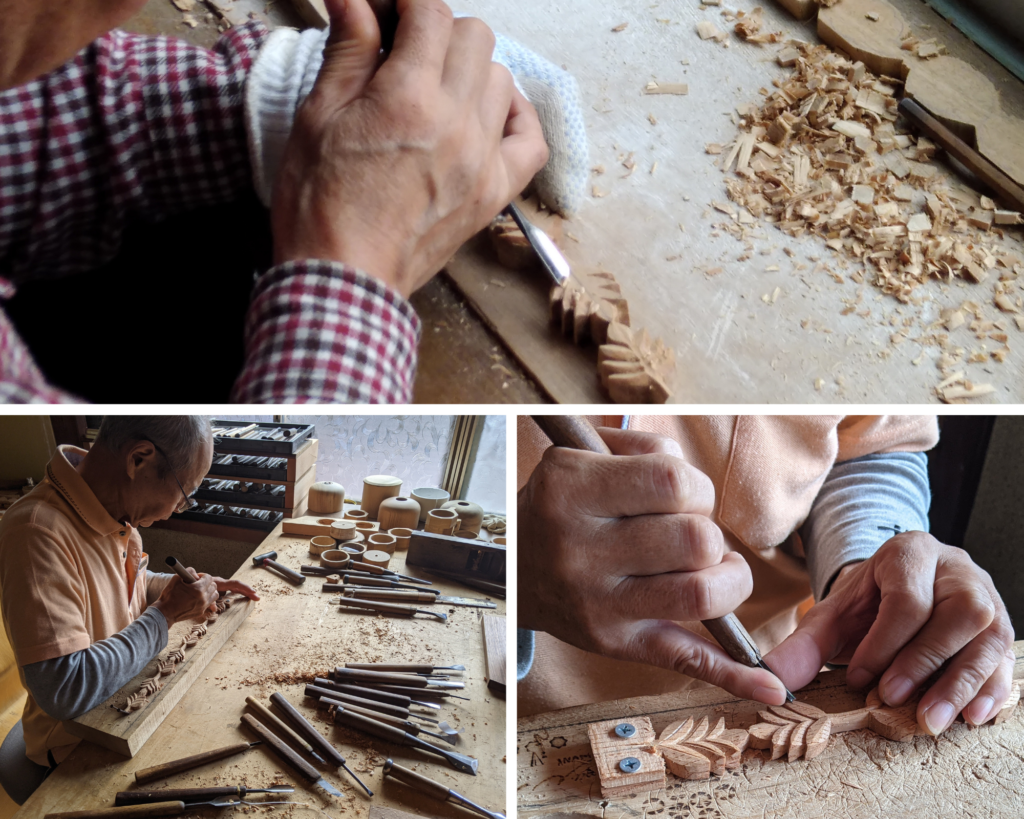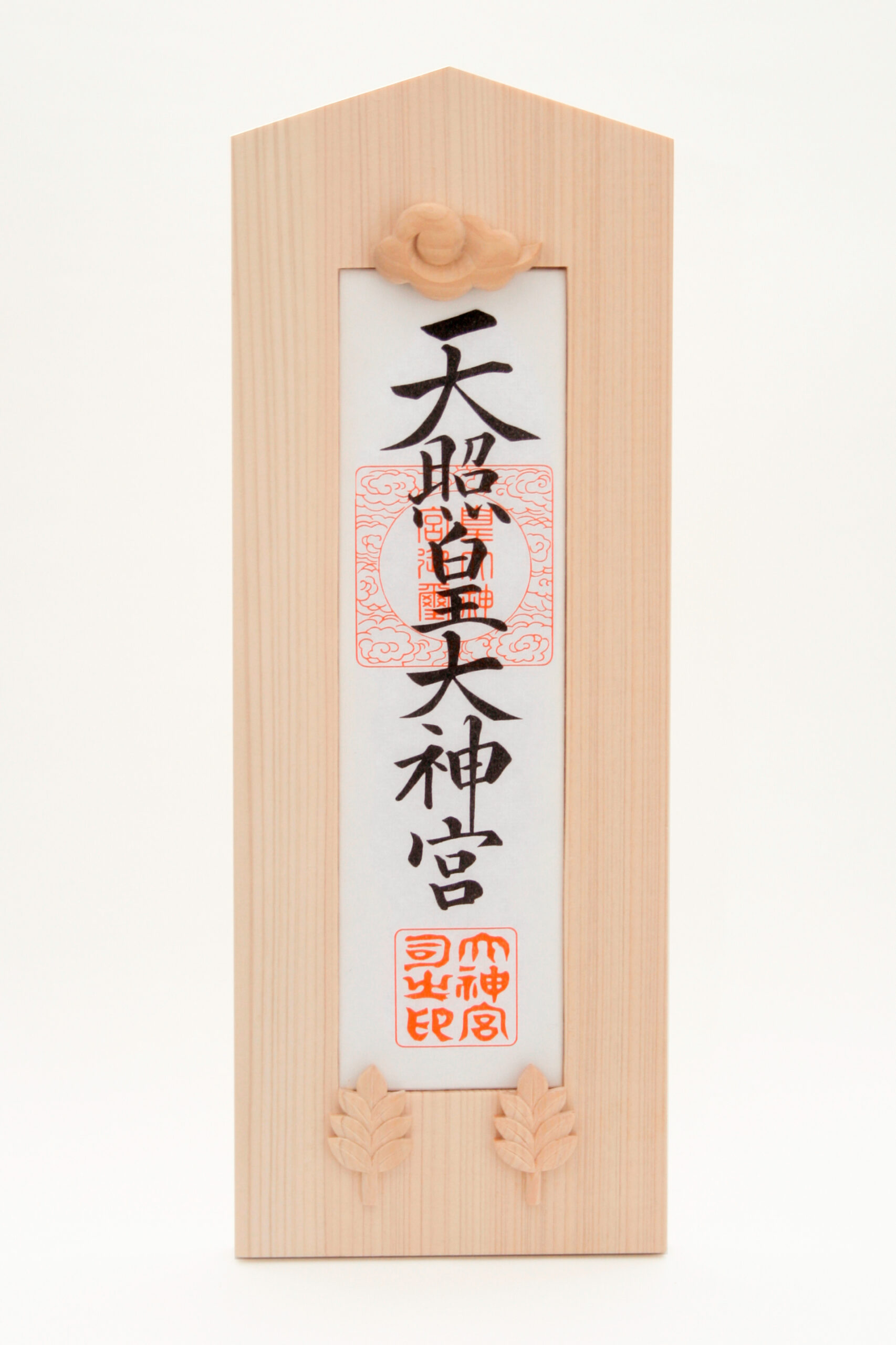熟練された職人の技を
現代に活かす
Utilizing the Skills of Skilled Craftsmen in Modern Times
#井波彫刻
Utilizing the Skills of Skilled Craftsmen in Modern Times
社寺彫刻や天神様、獅子頭といった伝統的な彫刻に代表されるような、井波の地が持つ「土徳」の精神性や、井波彫刻の技を下地としながらも、現代のライフスタイルや嗜好に合う新しい彫刻の表現を追求しています。井波彫刻の伝統美を尊重しながらも、伝統の枠にとらわれず、自由な発想で彫刻を創り出すことで、多くの方に木のぬくもりや、井波彫刻の面白さを感じていただけたら幸いです。
While based on the spirituality of “earth virtue” of Inami, as represented by traditional sculptures such as shrines and temples, Tenjin, and lion heads, and the techniques of Inami carving, I am pursuing a new expression of sculpture that fits. While respecting the traditional beauty of Inami carving, I hope that many people will feel the warmth of wood and the fun of Inami carving by creating sculptures with free ideas without being bound by traditional frameworks.
富山県南砺市井波地区。この地に明徳元年(1390)に建立された瑞泉寺と井波彫刻の発祥に深いつながりがあります。
江戸時代中期、瑞泉寺本堂の再建に際し、京都本願寺の御用彫刻師・前川三四郎が派遣されました。
地元の大工が彼から彫刻の技法を学んだことが井波彫刻の始まりとされています。
以後、神社仏閣彫刻から住宅の欄間・獅子頭などの置物に至るまで数多くの作品に井波彫刻の精巧な技術が施されてきました。
この約250年に渡る匠の技が今も数多くの井波彫刻師によって受け継がれています。
The origin of Inami chokoku has a deep connection to Zuisenji Temple, which was built here in the first year of the Meitoku era (1390).
In the 18th century, when the main hall of the Zuisenji Temple was being rebuilt, a skilled sculptor named Mekawa Sanshiro from Kyoto’s Honganji Temple was dispatched.
It is said that local carpenters learned carving techniques from him, marking the beginning of Inami carving.
Since then, the intricate techniques of Inami carving have been applied to numerous works, ranging from pieces for shrines and temples to residential transoms and lion head ornaments.
The exquisite craftsmanship of these skilled artisans has been passed down through generations of Inami woodcarvers for approximately 250 years, even to this day.
富山県南砺市井波地区。この地に明徳元年(1390)に建立された瑞泉寺と井波彫刻の発祥に深いつながりがあります。
江戸時代中期、瑞泉寺本堂の再建に際し、京都本願寺の御用彫刻師・前川三四郎が派遣されました。
地元の大工が彼から彫刻の技法を学んだことが井波彫刻の始まりとされています。
以後、神社仏閣彫刻から住宅の欄間・獅子頭などの置物に至るまで数多くの作品に井波彫刻の精巧な技術が施されてきました。
この約250年に渡る匠の技が今も数多くの井波彫刻師によって受け継がれています。
The origin of Inami chokoku has a deep connection to Zuisenji Temple, which was built here in the first year of the Meitoku era (1390).
In the 18th century, when the main hall of the Zuisenji Temple was being rebuilt, a skilled sculptor named Mekawa Sanshiro from Kyoto’s Honganji Temple was dispatched.
It is said that local carpenters learned carving techniques from him, marking the beginning of Inami carving.
Since then, the intricate techniques of Inami carving have been applied to numerous works, ranging from pieces for shrines and temples to residential transoms and lion head ornaments.
The exquisite craftsmanship of these skilled artisans has been passed down through generations of Inami woodcarvers for approximately 250 years, even to this day.
富山県南砺市井波の伝統工芸、井波彫刻の職人によるブランドです。
シンプルなデザインの中にも、職人の手仕事や木のぬくもり、香りを楽しんでいただけるような味わいのある商品づくりを大切にしています。
A brand created by artisans of Inami carving, a traditional craft of Inami, Nanto City, Toyama Prefecture.
Even in the simple design, we value the craftsmanship, the warmth of the wood, and the creation of tasteful products that you can enjoy the scent.


Emiko Nakata
中田絵美子
Mikio Nagata
永田幹夫
商品に関するお問い合わせや、井波彫刻のオーダーメイド制作に関しては、こちらのフォームからお問い合わせください。
富山県南砺市井波